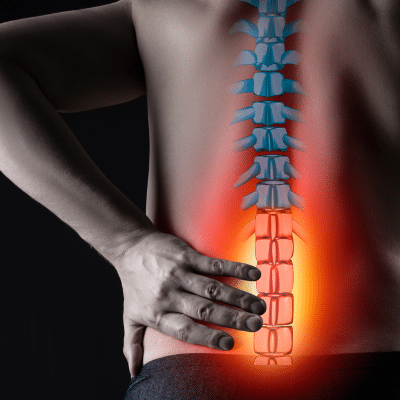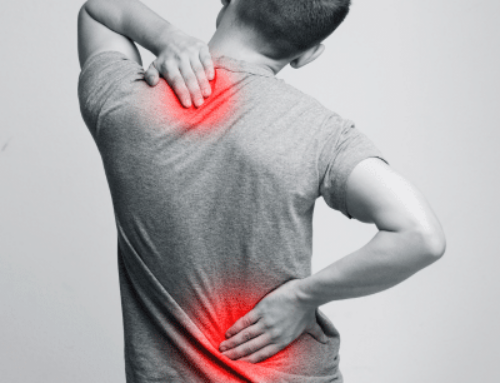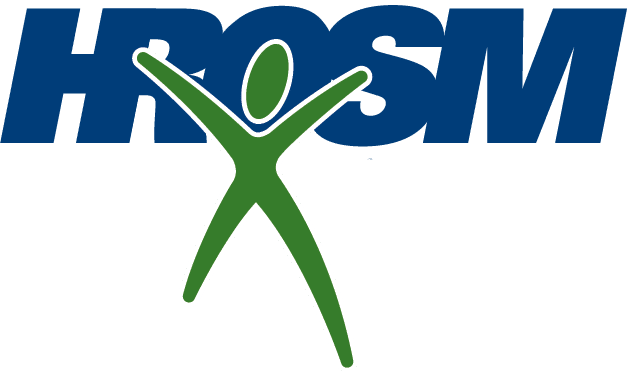
Types of Common Spine Injuries
Herniated Discs: A herniated disc occurs when the soft inner core of a spinal disc leaks out through a tear in the tough outer layer. This can result in pain, numbness, and weakness in the affected area, often radiating down the arms or legs.
Spinal Fractures: Fractures in the vertebrae can occur due to high-impact collisions or falls during sports activities. These fractures can range from minor cracks to more severe breaks, potentially causing spinal instability and nerve damage.
Spondylolysis and Spondylolisthesis: These conditions involve stress fractures or slippage of vertebrae in the lower back. They are commonly seen in athletes who engage in repetitive hyperextension activities, such as gymnastics, football, or weightlifting.
Spinal Stenosis: Spinal stenosis refers to the narrowing of the spinal canal, which results in the compression of the spinal cord and nerves. Athletes may experience symptoms such as leg pain, weakness, and difficulty walking, particularly during physical exertion.
Causes and Risk Factors
Spine injuries in athletes can be attributed to various factors, including:
- Repetitive motions or overuse, such as bending, twisting, or lifting heavy weights.
- Traumatic impacts or collisions during contact sports like football, rugby, or wrestling.
- Poor conditioning, improper technique, or inadequate warm-up routines.
- Genetic predisposition or underlying structural abnormalities in the spine.
Symptoms and Diagnosis
Athletes with spine injuries may experience symptoms such as localized pain, stiffness, tingling sensations, or weakness in the affected area. However, some injuries may also present with referred pain or neurological symptoms that radiate to other parts of the body. Diagnosing spine injuries often involves a comprehensive evaluation, including medical history, physical examination, imaging studies (e.g., X-rays, MRI scans), and possibly nerve conduction tests.
Treatment Options
Treatment for spine injuries in athletes depends on the type, severity, and underlying cause of the injury. Options may include:
- Rest, activity modification, and temporary cessation of sports participation to allow for healing.
- Physical therapy to improve flexibility, strength, and posture, as well as to address muscular imbalances.
- Medications like nonsteroidal anti-inflammatory drugs (NSAIDs) or muscle relaxants are used to relieve pain and inflammation.
- Injections of corticosteroids or nerve blocks to provide localized pain relief and reduce inflammation.
- Surgical intervention may be necessary for severe cases or when conservative treatments fail to alleviate symptoms.
Prevention Strategies
Preventing spine injuries in athletes involves a multifaceted approach that includes:
- Proper conditioning and strength training to improve core stability and muscular support around the spine.
- Incorporating flexibility exercises and proper stretching techniques into pre- and post-workout routines.
- Ensuring proper technique and biomechanics during sports activities, with emphasis on safe landing and lifting techniques.
- Using appropriate protective equipment, such as helmets, padding, or braces, particularly in contact sports.
- Implementing adequate rest and recovery periods to allow for tissue repair and adaptation.
Request Your Appointment Today
Spine injuries can have a significant impact on an athlete’s performance, well-being, and long-term health. By understanding the common types, causes, symptoms, and treatment options for spine injuries, athletes and sports medicine professionals can work together to prevent injuries, optimize recovery, and support athletes in achieving their athletic goals while minimizing the risk of spine-related complications. If you’re an athlete experiencing spine pain or discomfort, don’t hesitate to request your appointment at Hampton Roads Orthopaedics Spine & Sports Medicine today! Your spine health is essential for your overall athletic performance and longevity in your sport.






